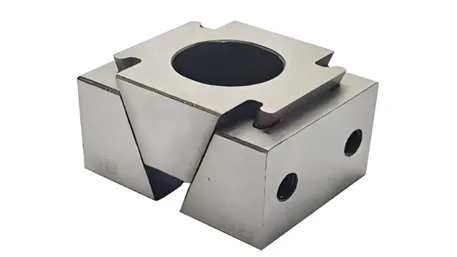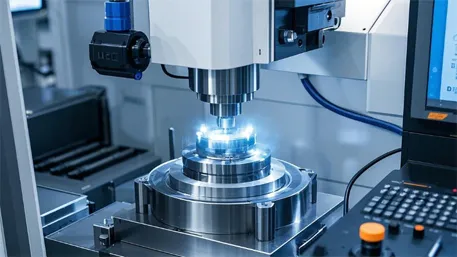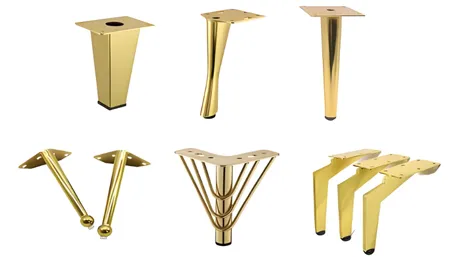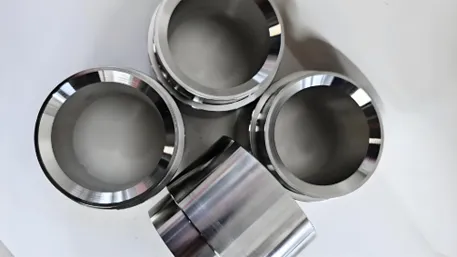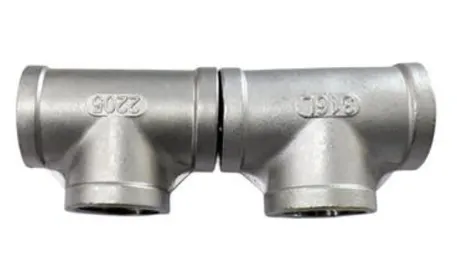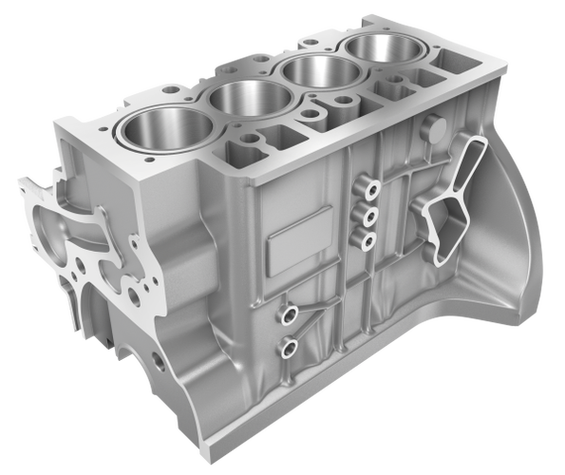Customized automotive exhaust components achieve a leap from “basic exhaust” to “dual customization of performance and sound” through data – driven precise design, advanced manufacturing processes, and acoustic tuning.
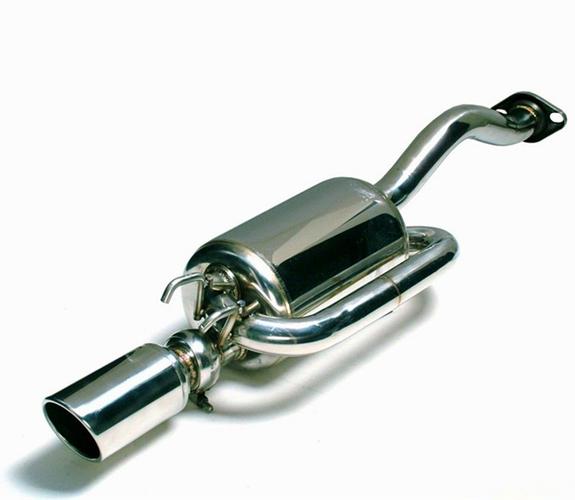
I. Why are standardized exhaust components difficult to meet high – performance requirements?
Q&A: What are the core advantages of customized automotive exhaust components?
Standardized exhaust components use a universal design and mass – production process, with three core pain points:
Q&A: What are the core advantages of customized automotive exhaust components?
Standardized exhaust components use a universal design and mass – production process, with three core pain points:
- Insufficient performance adaptability: Fixed pipe diameters (usually 50 – 70mm), bend angles, and silencer structures cannot match the exhaust characteristics of different engines, resulting in excessive or too low backpressure, with a power loss of up to 5 – 10%.
- Monotonous sound: The fixed internal structure of the muffler leads to sound frequencies concentrated in the range of 200 – 500Hz, lacking high – and low – frequency variations, and unable to meet the owners’ pursuit of personalized sound.
- Imbalance between lightweight and durability: Ordinary steel (density 7.85g/cm³) is mostly used, resulting in heavy components, poor corrosion resistance, easy rusting in a humid environment, and a service life of only 3 – 5 years.
However, customized automotive exhaust components focus on “dual customization of performance and sound”:
- Full – condition performance optimization:
- High – speed performance: For high – performance engines, through hydrodynamic simulation to optimize the pipe diameter gradient design (such as from 60mm to 76mm), the exhaust resistance is reduced by 30%, and the high – speed power output is increased by 8 – 12 horsepower.
- Low – torque protection: For turbocharged engines, a customized exhaust system with variable valves is designed. The valves are closed at low speeds to increase backpressure, reduce turbo lag, and the torque is increased by 15%.
- Data – driven acoustic design: Combining sound pressure level (SPL), frequency (20 – 2000Hz), and timbre preference data, by adjusting the number of internal partitions of the muffler, the perforation rate, and the size of the resonance cavity, personalized sounds from deep roars (80 – 200Hz) to high – pitched screams (800 – 1500Hz) can be customized.
II. How do the core processes of customized exhaust components achieve performance breakthroughs?
- Digital design and simulation optimization
- CFD hydrodynamic analysis: Using ANSYS Fluent software to simulate the exhaust flow velocity (up to 300m/s), pressure distribution, and eddy current under different conditions, optimizing the pipeline direction and pipe diameter changes, and improving the exhaust smoothness by 40%.
- Acoustic simulation modeling: Establishing an acoustic model through LMS Virtual.Lab to predict the sound attenuation curves of different muffler structures, adjusting the perforated plate aperture (1 – 3mm) and resonance cavity volume (0.5 – 2L), and achieving a target sound frequency error of < 5%.
- Rapid prototype verification: Using 3D – printed titanium alloy (accuracy ±0.1mm) to make exhaust component samples for real – vehicle testing, shortening the design iteration cycle from 15 days to 5 days.
- Advanced manufacturing processes: The ultimate pursuit from materials to finished products
- Precision processing of titanium alloy/stainless steel:
- Laser welding: Using fiber laser (power 2000W, weld width 0.3 – 0.5mm) to weld titanium alloy (density 4.5g/cm³) or 304 stainless steel (density 7.93g/cm³) pipes, the welding strength reaches 95% of the base material, and the weight is reduced by 30 – 50%.
- CNC tube bending: A five – axis CNC tube bender (bending radius tolerance ±0.5mm) realizes precise forming of complex angles (minimum bending radius 1.5D), ensuring that the pipeline layout closely fits the chassis space.
- Surface treatment technology:
- High – temperature ceramic coating: Spraying an alumina ceramic coating 200 – 300μm thick on the surface of the exhaust components, the heat insulation efficiency is increased by 60%, and the engine compartment temperature is reduced by 15 – 20℃.
- Anodizing: Anodizing titanium alloy components to form a colored oxide film (thickness 5 – 10μm), which not only improves corrosion resistance but also gives a personalized appearance.
- Variable valve integration:
- Electric/vacuum valves: Installing a stepping motor (response time < 0.5s) or a vacuum actuator, and controlling the valve opening and closing through the ECU to achieve one – click switching of sound and performance.
- Intelligent control logic: Automatically adjusting the valve according to signals such as engine speed (e.g., triggered at 5000rpm) and throttle opening ( > 70% full – open) to optimize power output and sound performance.
- Precision processing of titanium alloy/stainless steel:
- Intelligent production and data closed – loop
- Production execution control: Real – time collection of more than 20 parameters such as welding temperature (titanium alloy welding 2000 – 2500℃), tube bending angle, and pipe diameter size. AI algorithms automatically compensate for process deviations, and the yield rate is increased from 80% to 96%.
- Detection and calibration: Using a coordinate measuring machine (accuracy ±0.05mm) to detect key dimensions, and a sound level meter (accuracy ±0.1dB) for sound spectrum analysis. The data is uploaded to the MES system to form a digital twin file.
III. Functional innovation: How do customized exhaust components reshape the driving experience?
- Intelligent sound adjustment system
- APP remote control: Customizing sound modes (track mode, street mode, silent mode) through a mobile APP, adjusting the sound pressure level (80 – 110dB) and frequency characteristics to achieve personalized sound customization.
- Environment – adaptive: Installing an internal microphone to monitor environmental noise in real – time and automatically adjust the exhaust valve opening. Reducing the sound to avoid disturbing residents on urban roads and releasing full – power sound on the track.
- Performance monitoring and optimization
- Exhaust temperature/pressure sensors: Installing sensors (accuracy ±1℃, ±0.1kPa) at positions such as the exhaust manifold and three – way catalytic converter to monitor exhaust temperature (up to 1000℃) and pressure in real – time. Transmitting data to the vehicle ECU through the OBD interface to optimize the air – fuel ratio and ignition advance angle, improving fuel economy by 3 – 5%.
- Dynamic backpressure adjustment: According to the driving mode and working conditions, the electric valve dynamically adjusts the exhaust backpressure (range 5 – 20kPa), reducing backpressure to increase power during acceleration and increasing backpressure to achieve a popping effect during deceleration.
IV. Quality control: Stringent verification throughout the chain from materials to finished products
- Multi – dimensional performance testing system
- Material – level screening:
- Titanium alloy: Testing tensile strength (≥895MPa) and elongation (≥10%) to ensure compliance with ASTM B348 standards.
- Stainless steel: Conducting a salt – spray test (no corrosion in 500 hours) to verify corrosion resistance and also testing the intergranular corrosion tendency.
- Finished – product – level testing:
- Durability test: Simulating 100,000 thermal cycles (200 – 800℃) to ensure no cracks in the welded parts and no deformation of the components.
- Acoustic test: Testing the sound pressure level, frequency distribution, and timbre at different speeds in a semi – anechoic chamber to ensure the sound meets the design standards.
- Pressure test: Applying a pressure of 1MPa to the exhaust system, holding the pressure for 5 minutes, and detecting the tightness with a leakage rate of < 0.1L/min.
- Material – level screening:
- Intelligent defect prevention technology
- First – piece ten – inspection system: The engineering team verifies 30 indicators such as material batches, welding quality, and pipe diameter size to intercept potential defects.
- AI visual full – inspection: A linear array camera completes the surface scan of components in 0.3 seconds. A deep – learning algorithm identifies welding defects (such as pores with a diameter > 0.5mm) and scratches (length > 2mm), with a missed – detection rate of < 0.003%.
V. How does small – batch customization balance efficiency and cost?
Q&A: Does high – precision customization mean high cost?
Through three process innovations, the customization cycle is shortened by 40% and the cost is reduced by 25%:
Q&A: Does high – precision customization mean high cost?
Through three process innovations, the customization cycle is shortened by 40% and the cost is reduced by 25%:
- Modular design library: Establishing more than 10 standardized modules such as exhaust manifolds, mufflers, and tail sections, with a reuse rate of up to 70%, reducing the development cost by 35%.
- Flexible production line: The robot automatic welding system is equipped with quick – change fixtures (change – over time < 5 minutes) to achieve multi – variety and small – batch (20 – 500 pieces) production, and the equipment utilization rate is increased to 85%.
- Digital twin technology: Creating a digital twin model for each customized exhaust system, monitoring the usage status in real – time, predicting the component life (error < 8%), and sending maintenance reminders in advance, reducing the after – sales cost by 20%.
VI. Core considerations for choosing customized exhaust components
- Data collection and analysis capabilities: The supplier should have professional software and equipment such as CFD simulation and acoustic analysis to ensure that the customization plan is based on accurate data.
- Process complexity: It should cover all – process capabilities such as titanium alloy processing, intelligent valve integration, and acoustic tuning to meet complex customization requirements.
- Certification and compliance: Providing third – party certifications such as TÜV and SGS to ensure that the product complies with noise regulations (such as EU ECE R51) and safety standards.
Conclusion
The value of customized automotive exhaust components lies in defining “the ultimate balance of performance and sound” with data and achieving “personalized upgrading of the driving experience” with processes. In the trend of the automotive culture developing towards high – performance and personalization, customized solutions with “data – driven design + advanced manufacturing processes” are becoming key elements to enhance vehicle power and driving pleasure. From the exciting roars on the track to the unique sound signatures on the street, customized exhaust components will re – define the passion and smoothness of every acceleration with “millimeter – level precision” and “intelligent adjustment”.
(Contact us immediately to obtain a customized automotive exhaust component solution and a free performance simulation analysis service)
The value of customized automotive exhaust components lies in defining “the ultimate balance of performance and sound” with data and achieving “personalized upgrading of the driving experience” with processes. In the trend of the automotive culture developing towards high – performance and personalization, customized solutions with “data – driven design + advanced manufacturing processes” are becoming key elements to enhance vehicle power and driving pleasure. From the exciting roars on the track to the unique sound signatures on the street, customized exhaust components will re – define the passion and smoothness of every acceleration with “millimeter – level precision” and “intelligent adjustment”.
(Contact us immediately to obtain a customized automotive exhaust component solution and a free performance simulation analysis service)

